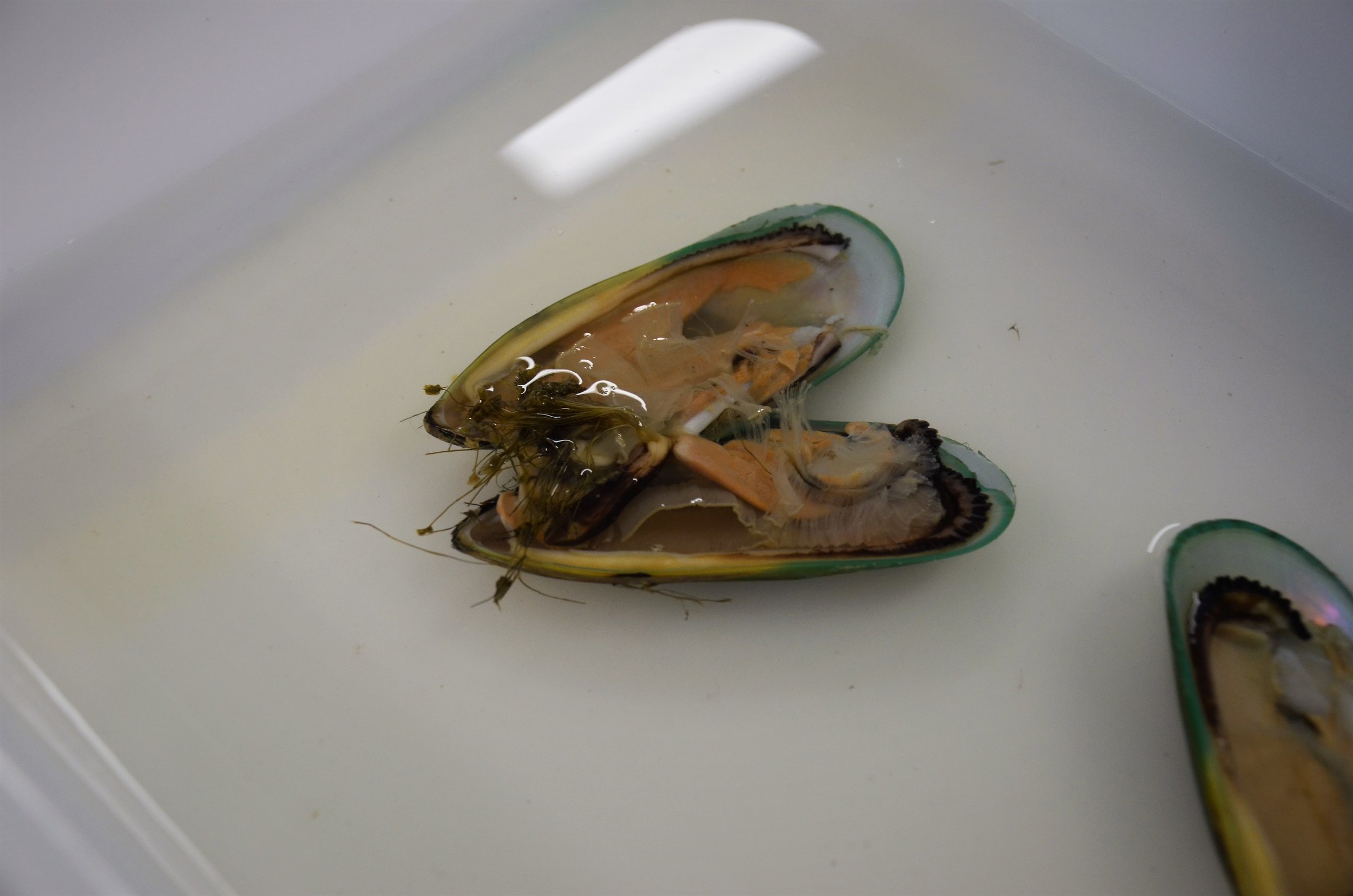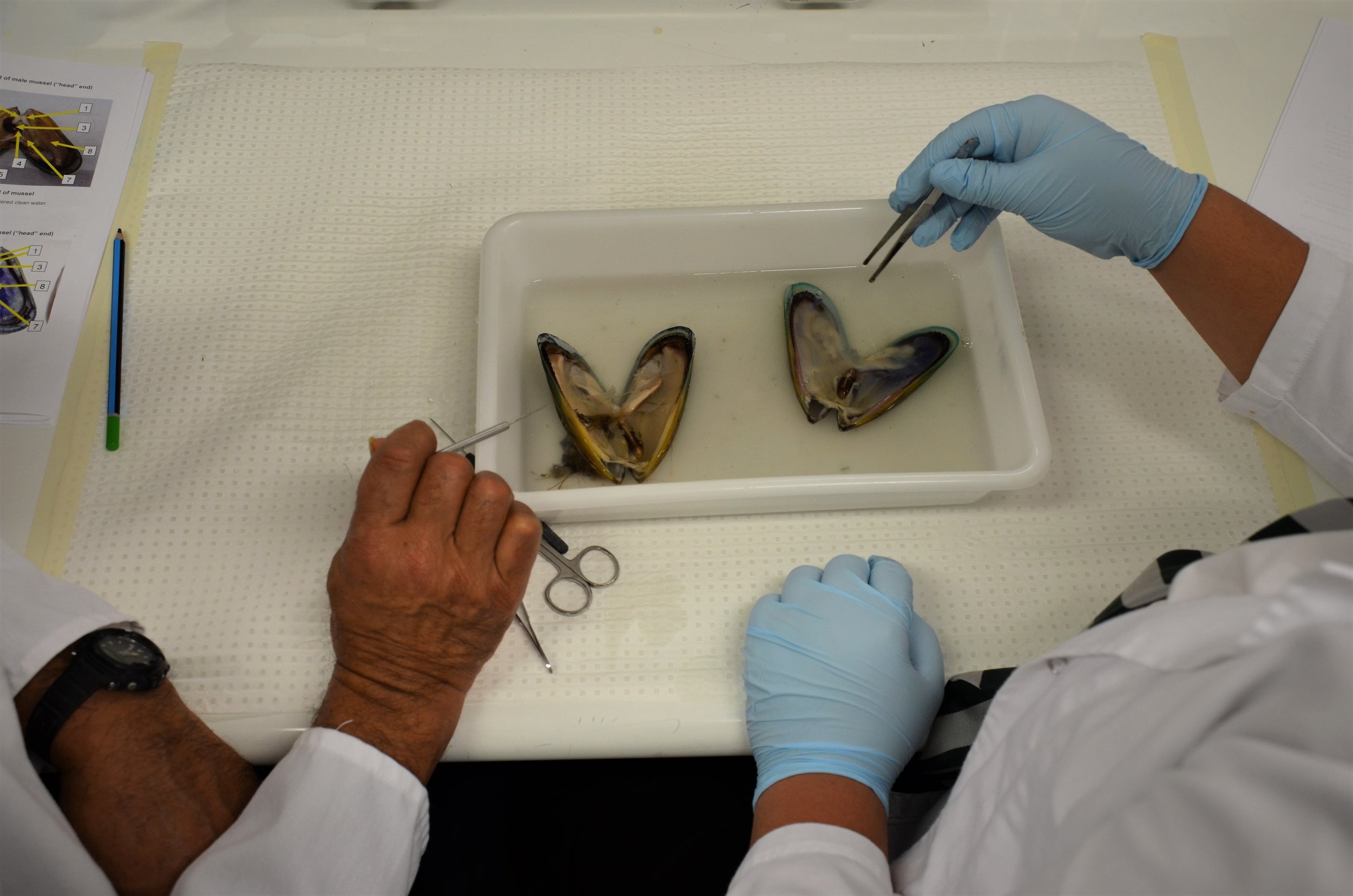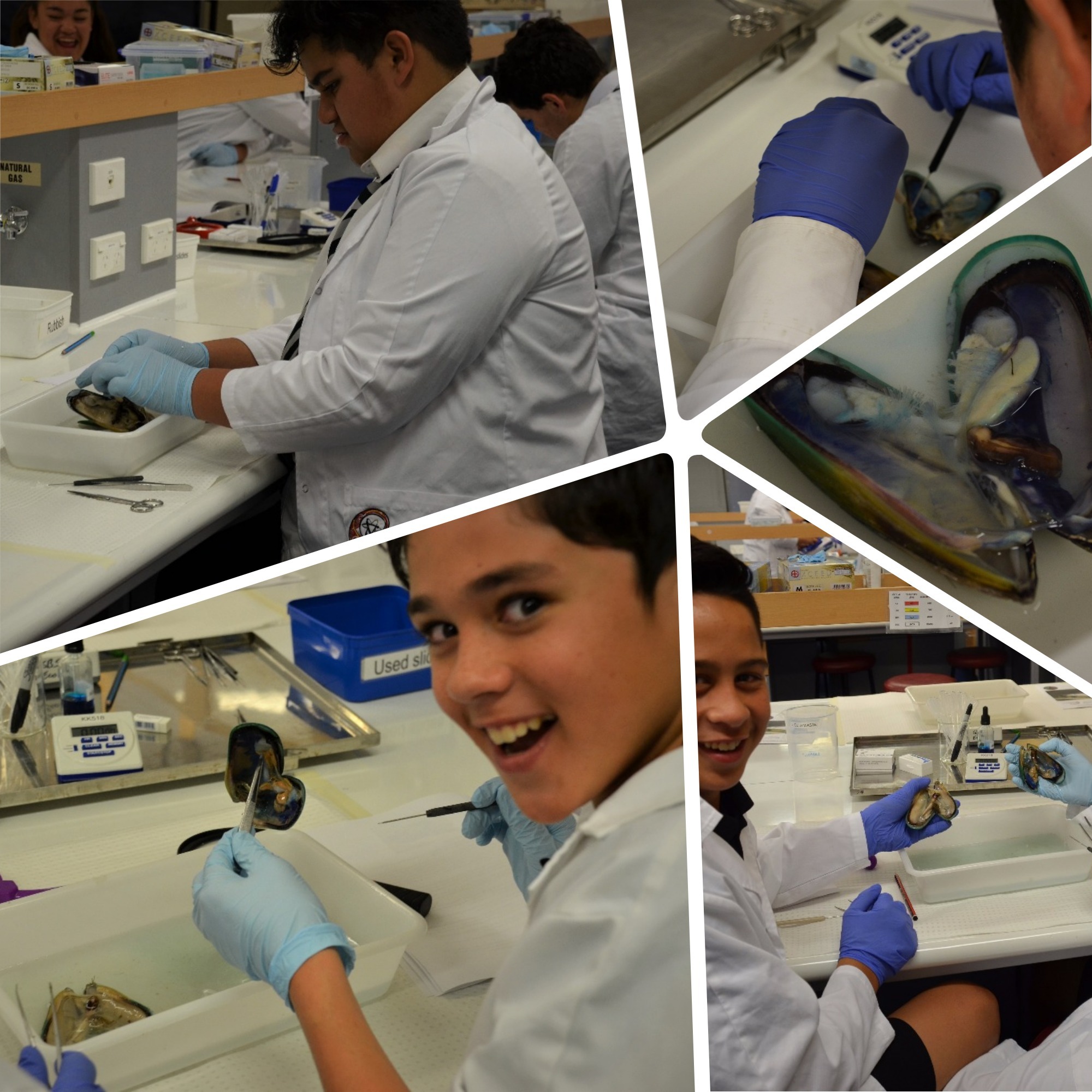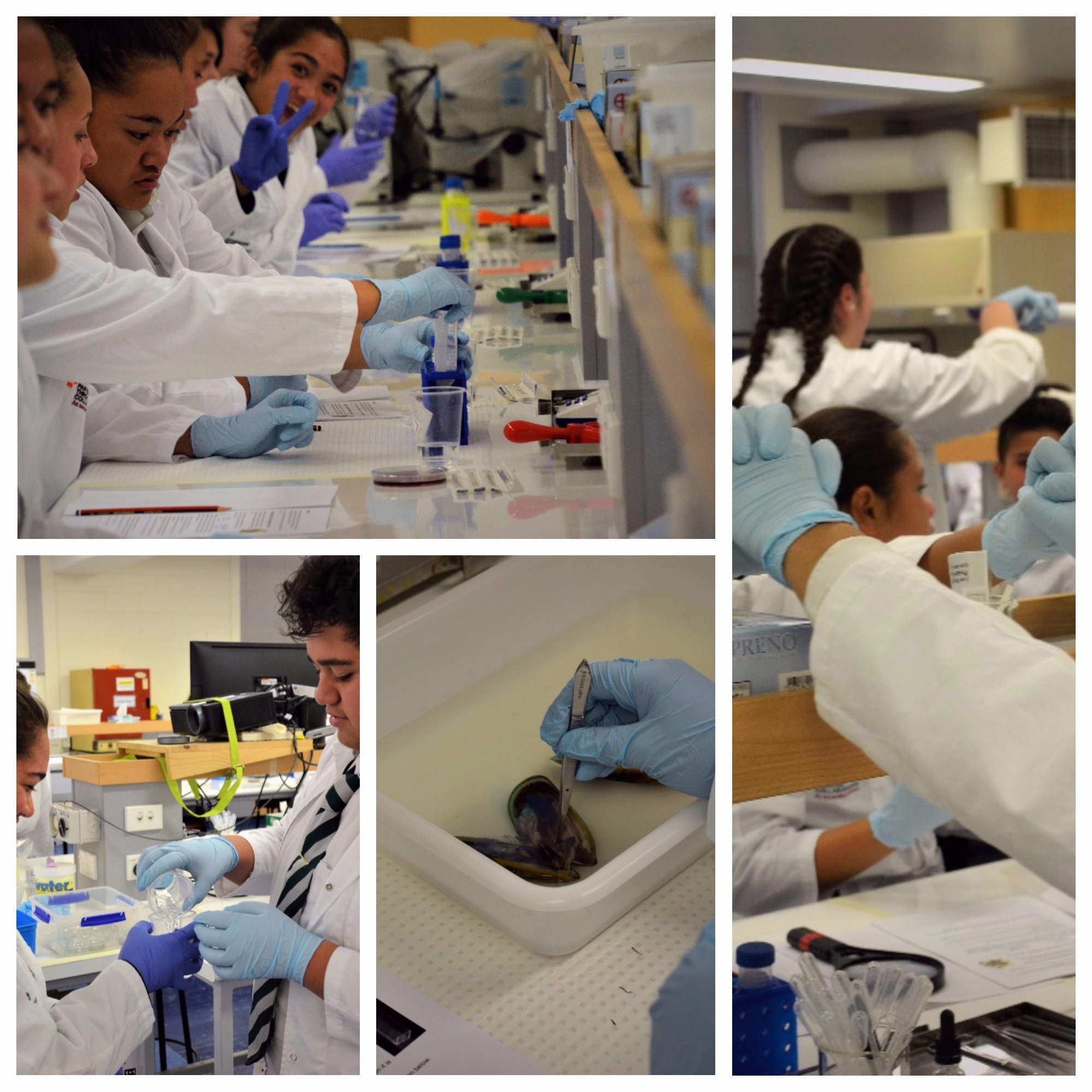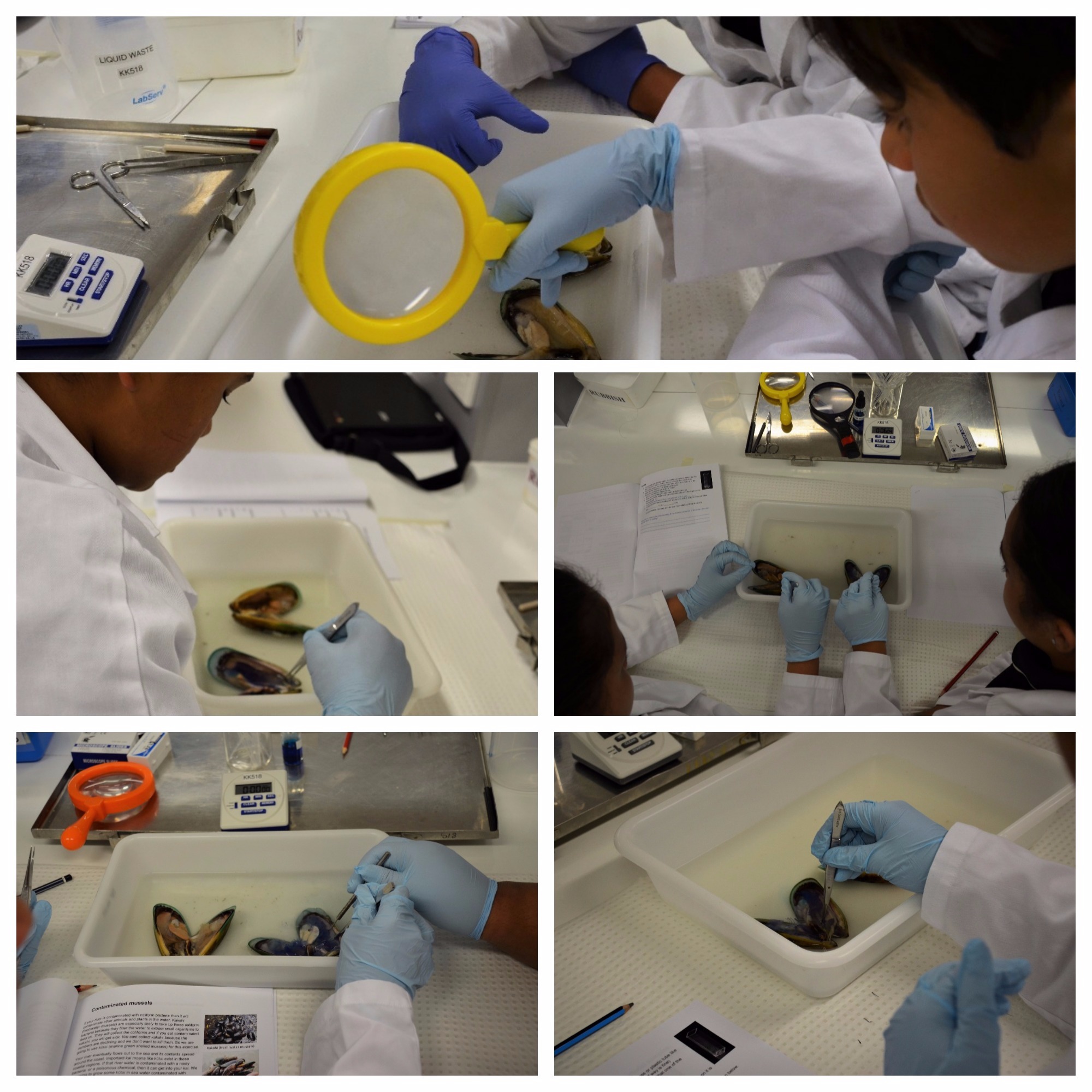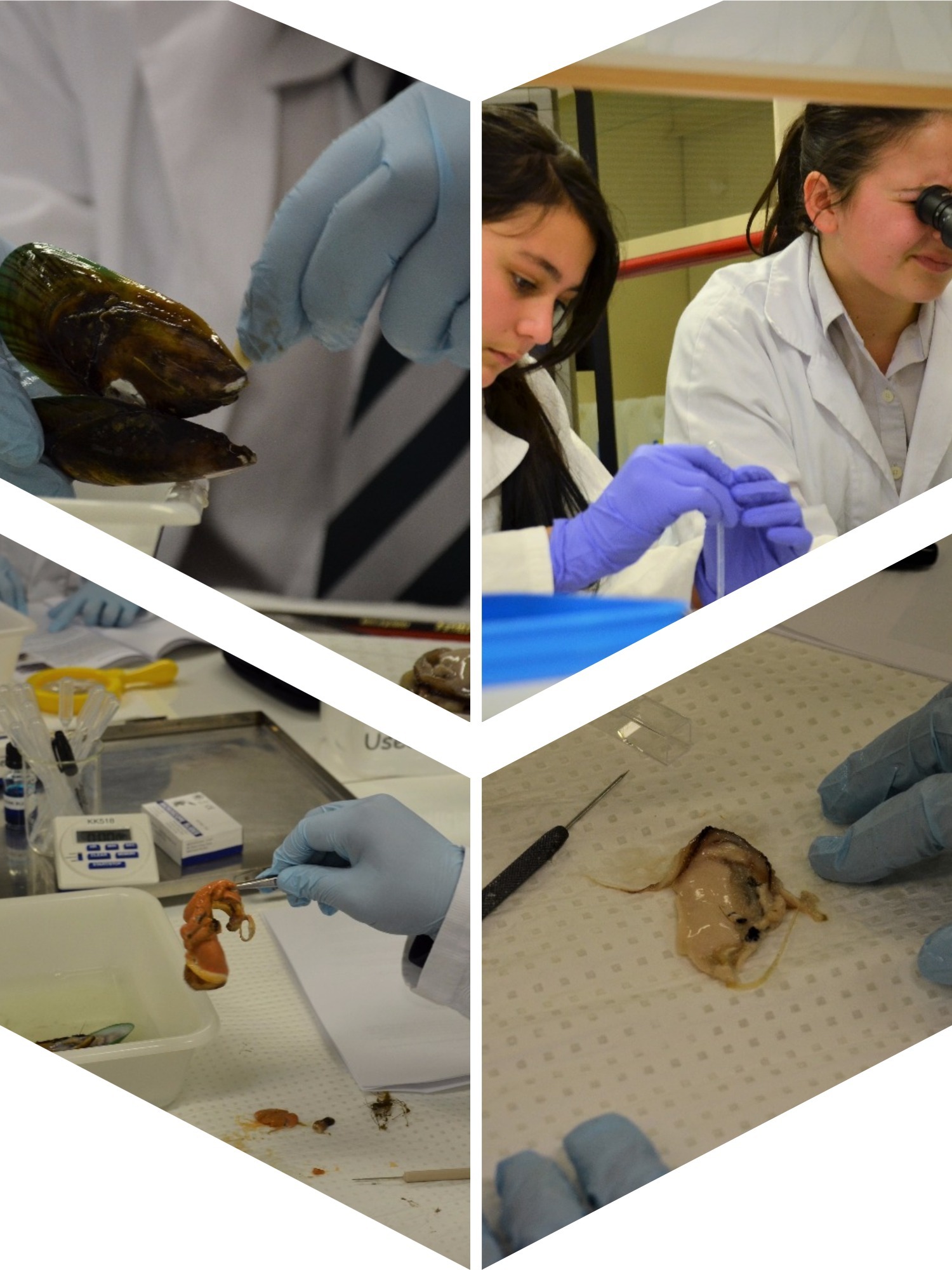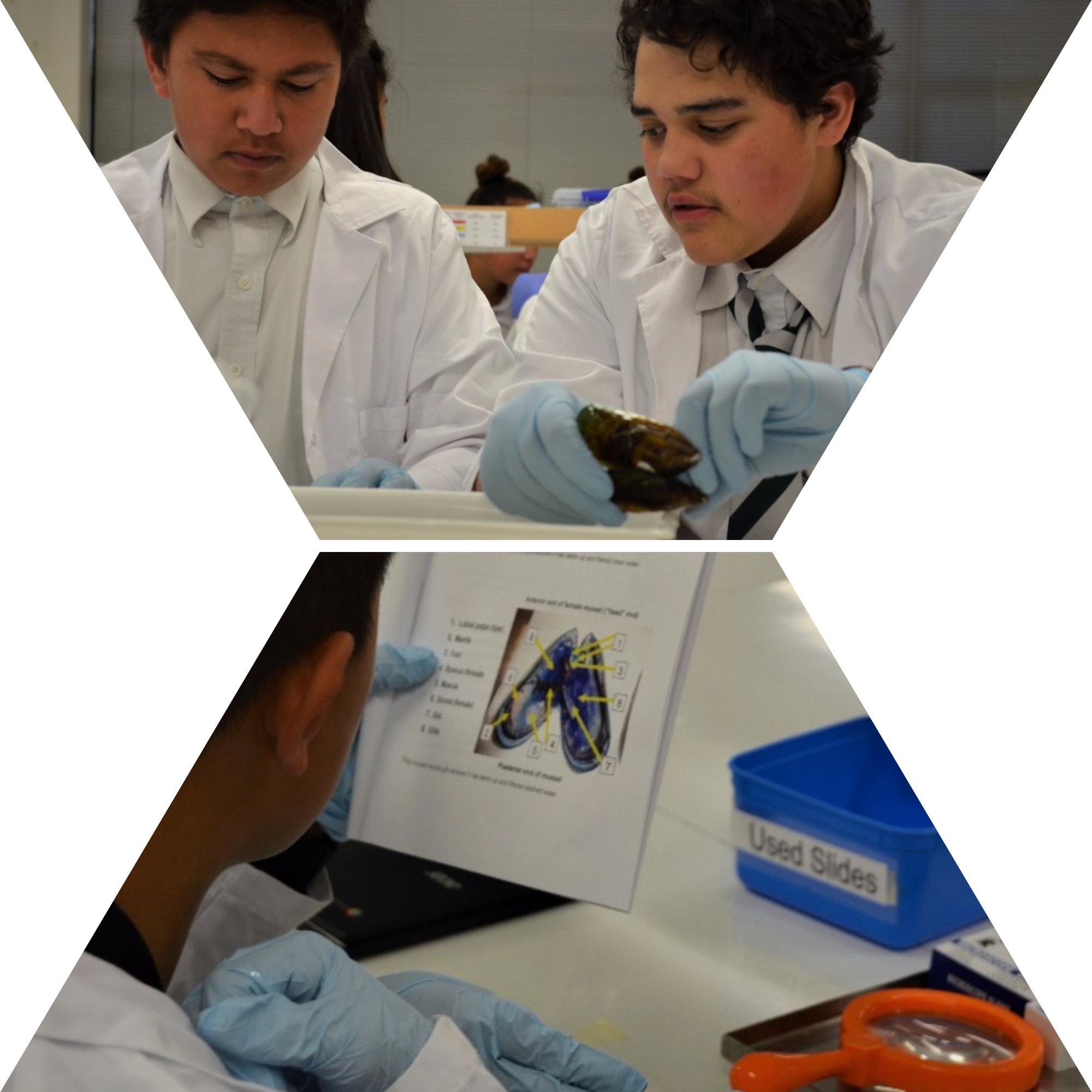Microbial Analysis Upskilling Part 3
Kawerau and Hastings students focused on mussel contamination during their time at Victoria University; learning and gaining valuable skills from Associate Professor Ryan and graduate students. Scientists have been evaluating the potential of mussels to detect microbial contamination. In the latest May 2017 article by EPA they advise that 'microbial contamination in lakes, rivers and oceans can cause illnesses to animals and humans who come in contact with the water. To better characterize risks caused by microbial contamination, low cost, sustainable techniques are needed to collect microorganisms. Such techniques would make routine monitoring of ambient water more feasible'.
Mussels and other bivalves are very effective as a possible technique to detecting contamination. As Professor Ryan explained mussels can act as natural filtration devices that can filter a large volume of water per hour.
J R Milne of Environmental Monitoring and Investigations Greater Wellington Regional Council reports that 'filter-feeding shellfish process large amounts of water from a fixed location, and have the tendency to accumulate a wide range of contaminants in their tissues. As such, tissue contaminant levels provide an indication of ambient water quality conditions, with the added advantage that the accumulated contaminants are representative of only those forms which are biologically available to other organisms. Periodic monitoring of contaminants in shellfish flesh can therefore assist in determining whether .. coastal water quality of a high standard'.
The United States are conducting numerous studies using mussels as early indicators of microbial contamination. The following was reported by Chemical and Engineering news, January 2015 'reintroducing a threatened freshwater mussel species to streams and estuaries could help remove harmful bacteria from the water, according to a new laboratory study (Environ Sci. Technol. 2015, DOI: 10.1021/es5033212)'.
WATER CLEANERS
This threatened mussel species (Anodonta californiensis) could gobble up Escherichia coli from contaminated urban lakes.
According to Aquaculture New Zealand 'The New Zealand Greenshell™ Mussel (Perna canaliculus) is unique to New Zealand’s pristine waters. The distinctive jade colour of the shell adds extraordinary visual appeal to a plate, with chefs and consumers worldwide experiencing the culinary versatility, extensive nutritional benefits, succulent plump meat and sweet tender taste of the New Zealand Greenshell™ Mussel. Fast becoming the world’s most sought after shellfish; chefs worldwide are exploring the culinary versatility of the New Zealand Greenshell™ Mussel'.
Empowering our future students as avid stewards in the thrust towards keeping our rivers and streams clean and pure is pivotal in ensuring NZ mussels become some of the safest mussels in the world.



